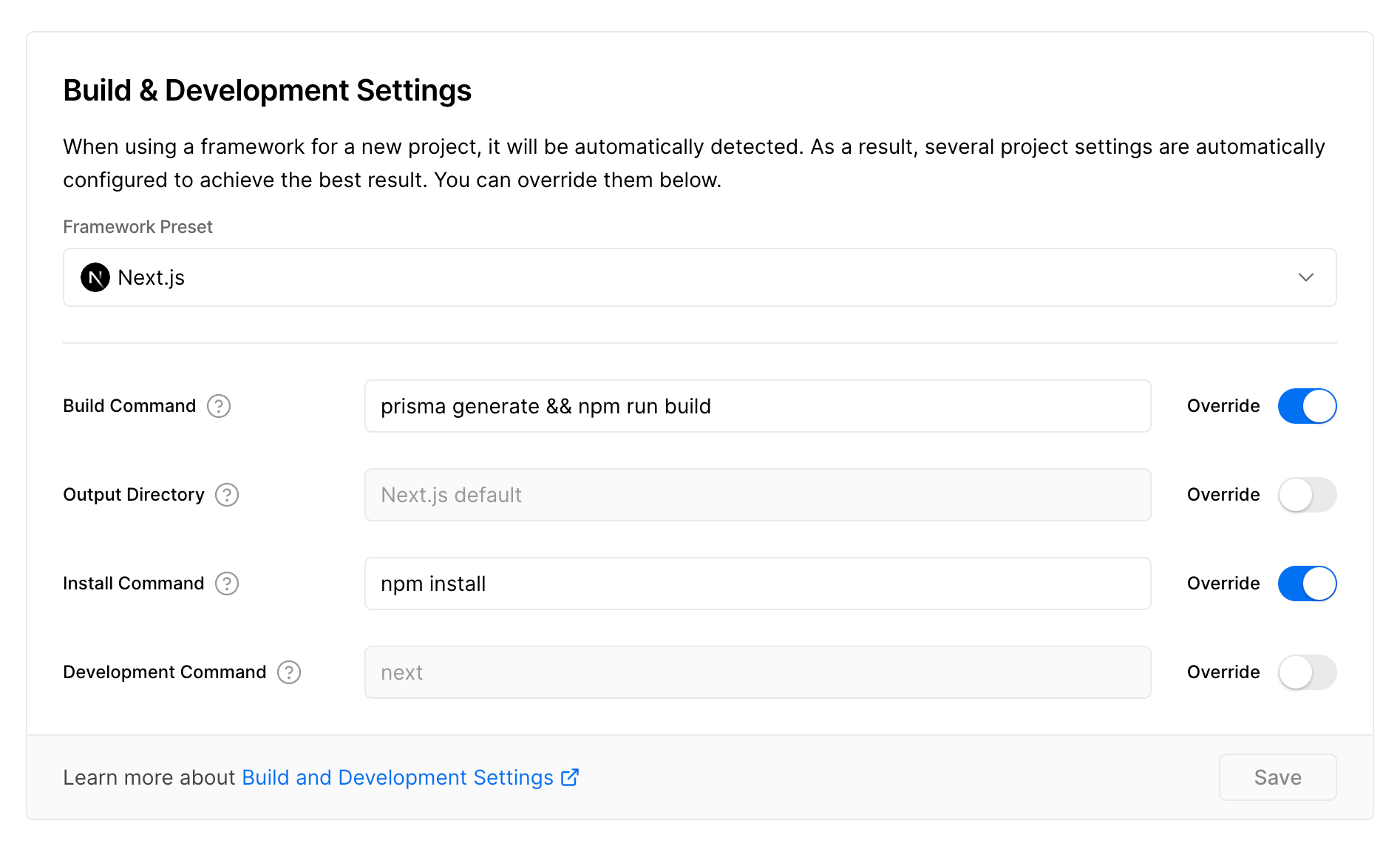Migrate the Schema
Welcome to the next section of NextMerce documentation, to migrate the schema. After generating the database URL, you have to migrate the schema to your database. It easily ensures that your database structure aligns perfectly with your e-commerce project.
Schema migration helps you create the necessary tables, columns, and relationships in your database. It helps to make your store functional and maintain consistency.
Follow the instructions below to complete the migration.
Run this command to push the schema to your database.
npx prisma db pushAfter you run this you’ll be able to see the Tables your Database dashboard
Now run this command
npx prisma generateNow go ahead and signup using the Form. If everything was done properly you’ll see the user on the Database.
Notes: Make sure you run Prisma generate command before the final build
prisma generatethen
npm run buildAlso, while deploying your app on Vercel, edit build command and make it like the screenshot below:

Frequently Asked Questions
- How can I optimize migrations for large databases?
For large databases, you can break the migration process into smaller batches. It will help you avoid running complex operations at the peak time of traffic. In addition to that, you can use the indexed columns to speed up the operations. Always test the migrations into the staging environment before applying them to the applications.
- Can migrations affect my application performance?
Yes, migrating the schema can affect your performance sometimes. However, if you are migrating smaller datasets, it often does not hamper your performance or experience. The best practice is to run migrations during the off-time.
- How do I handle schema migrations with zero downtime?
To implement the zero downtime schema migrations, you can use the non-breaking schema changes. You can add new columns and indexes so as not to hamper the application's performance. After that, you can gradually shift the applications to the new schema to minimize the impacts on running time or performance.
For larger databases, make small and non-breaking changes first. Migrate to the new schema gradually to reduce the downtime issues.